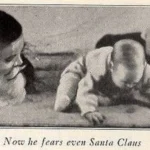In 1958, a young couple from Virginia—Richard Loving, a white man and Mildred Loving, a woman of color—just wanted to live together as husband and wife but in their home state, that simple wish was a crime. Their love story would soon become one of the most important civil rights cases in American history: Loving v. Virginia (1967).
A Love That Broke the Law
Richard and Mildred grew up in Caroline County, Virginia, a small town where Black and white communities lived near each other but under strict Jim Crow laws.
Mildred was born Mildred Delores Jeter, the daughter of Musial and Theoliver Jeter. She identified herself as Indian-Rappahannock, though reports described her as having Cherokee, Portuguese and Black ancestry.
Richard Perry Loving was white, the son of Lola and Twillie Loving.
When Mildred became pregnant, the couple decided to marry. In June 1958, they traveled to Washington, D.C. where interracial marriage was legal.
They came back home to Central Point, proudly hanging their marriage certificate on the wall. But just a few weeks later, in the early morning of July 11, 1958, the police burst into their bedroom.
“See, we’re married,” Mildred told the officers, pointing to the certificate. But the police told her it didn’t count in Virginia.
The Lovings were arrested and charged under Virginia’s Racial Integrity Act of 1924, which banned marriage between “white” and “colored” people. Under Section 20-58 and Section 20-59 of the Virginia Code, it was a felony.
On January 6, 1959, both Richard and Mildred pleaded guilty to “cohabiting as man and wife, against the peace and dignity of the Commonwealth.”
They were sentenced to one year in prison but the judge suspended the sentence on one condition: they had to leave Virginia and not return together for 25 years. Heartbroken, the Lovings moved to Washington, D.C.
The Fight for Justice
Life in D.C. wasn’t easy. They missed their families and their home. In 1963, Mildred decided to take action. She wrote a letter to Attorney General Robert F. Kennedy, explaining their situation. Kennedy replied, referring her to the American Civil Liberties Union (ACLU).
The ACLU assigned two lawyers, Bernard S. Cohen and Philip J. Hirschkop, to help them. They filed a motion in the Caroline County Circuit Court, arguing that Virginia’s anti-miscegenation laws violated the Fourteenth Amendment’s Equal Protection Clause.
But in 1965, Judge Leon M. Bazile refused to overturn their conviction. His words shocked many: “Almighty God created the races white, black, yellow, malay and red, and he placed them on separate continents… The fact that he separated the races shows that he did not intend for the races to mix.”
The Lovings didn’t give up. They appealed to the Virginia Supreme Court but Justice Harry L. Carrico upheld the law. Finally, in 1966, the U.S. Supreme Court agreed to hear their case.
When their lawyer, Cohen, asked Richard if he had a message for the justices, Richard said simply, “Mr. Cohen, tell the Court I love my wife, and it is just unfair that I can’t live with her in Virginia.”
What Happened Before the Case
Before Loving v. Virginia, many cases had challenged interracial marriage bans but failed. In Pace v. Alabama (1883), the U.S. Supreme Court had ruled that laws punishing interracial couples didn’t violate the Constitution because they punished both races “equally.”
In later years, courts across the country made similar rulings. For example, in Kirby v. Kirby (1921), an Arizona court annulled a marriage because the wife was of “Negro descent.”
In Roldan v. Los Angeles County (1933), California briefly allowed Filipino-white marriages—only for the law to be changed a week later.
It wasn’t until Perez v. Sharp (1948) that a state court, in California, declared interracial marriage bans unconstitutional. But it would take nearly 20 more years before the U.S. Supreme Court took the same stand.
The Supreme Court Steps In
On June 12, 1967, the Supreme Court delivered its decision in a unanimous 9–0 ruling. Chief Justice Earl Warren wrote the opinion.
Virginia argued that its law didn’t violate the Equal Protection Clause because it “equally burdened” both races. But the Court firmly rejected that argument:
“[W]e reject the notion that the mere ‘equal application’ of a statute containing racial classifications is enough to remove the classifications from the Fourteenth Amendment’s proscription of all invidious racial discriminations.”
The justices said that any law based on race must face the “most rigid scrutiny.” They ruled that Virginia’s law had no purpose other than racial discrimination and to maintain white supremacy:
“There is patently no legitimate overriding purpose independent of invidious racial discrimination which justifies this classification… restricting the freedom to marry solely because of racial classifications violates the central meaning of the Equal Protection Clause.”
The Court also found the law violated the Due Process Clause, saying:
“The freedom to marry has long been recognized as one of the vital personal rights essential to the orderly pursuit of happiness by free men.”
The Lovings’ convictions were overturned and their victory ended all race-based marriage bans in the United States.
Life After the Ruling
Even after the Supreme Court’s decision, some states were slow to act. Alabama didn’t officially remove its interracial marriage ban from the state constitution until the year 2000.
But by then, interracial marriages had become far more common. In 1960, only 0.4% of U.S. marriages were interracial. By 1980, it was 2%. By 2015, that number had risen to 16%.
Every June 12, people across the U.S. celebrate “Loving Day,” honoring the couple whose love changed history.
Decades later, Loving v. Virginia became a major reference point in the fight for same-sex marriage. Judges often cited the case to show that marriage is a basic human right.
In Obergefell v. Hodges (2015), the Supreme Court ruled that same-sex couples have the same right to marry as anyone else. The decision mentioned Loving nearly a dozen times.
Justice Anthony Kennedy even noted that, like Brown v. Board of Education (1954) and Loving v. Virginia (1967), the ruling came about 13 years after another major equality decision (Lawrence v. Texas in 2003).
In 2007, on the 40th anniversary of Loving, Mildred Loving herself released a statement supporting same-sex marriage.
From Courtrooms to Hollywood
The Lovings’ story has inspired films, books and songs. In 1996, Mr. and Mrs. Loving was released, starring Lela Rochon and Timothy Hutton. Mildred later said, “Not much of it was very true. The only part of it right was I had three children.”
In 2012, HBO released The Loving Story, a documentary by Nancy Buirski that won a Peabody Award. Four years later, Jeff Nichols’ movie Loving hit theaters, starring Ruth Negga and Joel Edgerton. Negga earned an Oscar nomination for her role.
More recently, the opera Loving v. Virginia premiered in 2025, and a French novel titled L’amour des Loving retold their story.
In 2022, Congress passed the Respect for Marriage Act which officially protected interracial and same-sex marriages under federal law—cementing the legacy of Loving v. Virginia.



